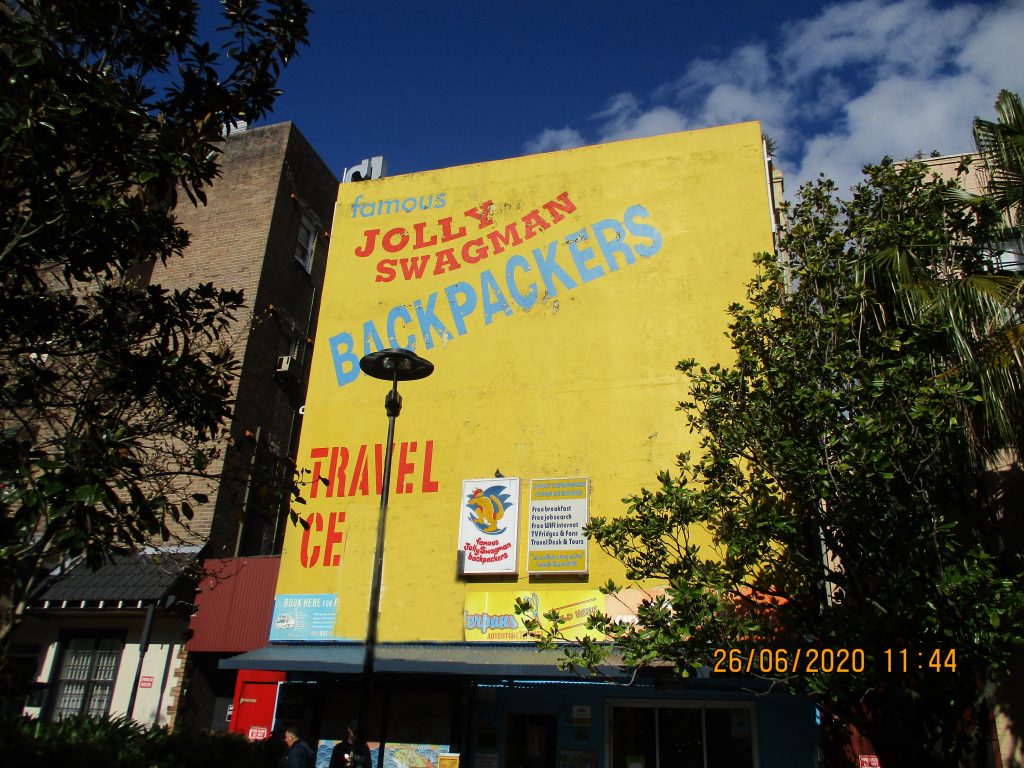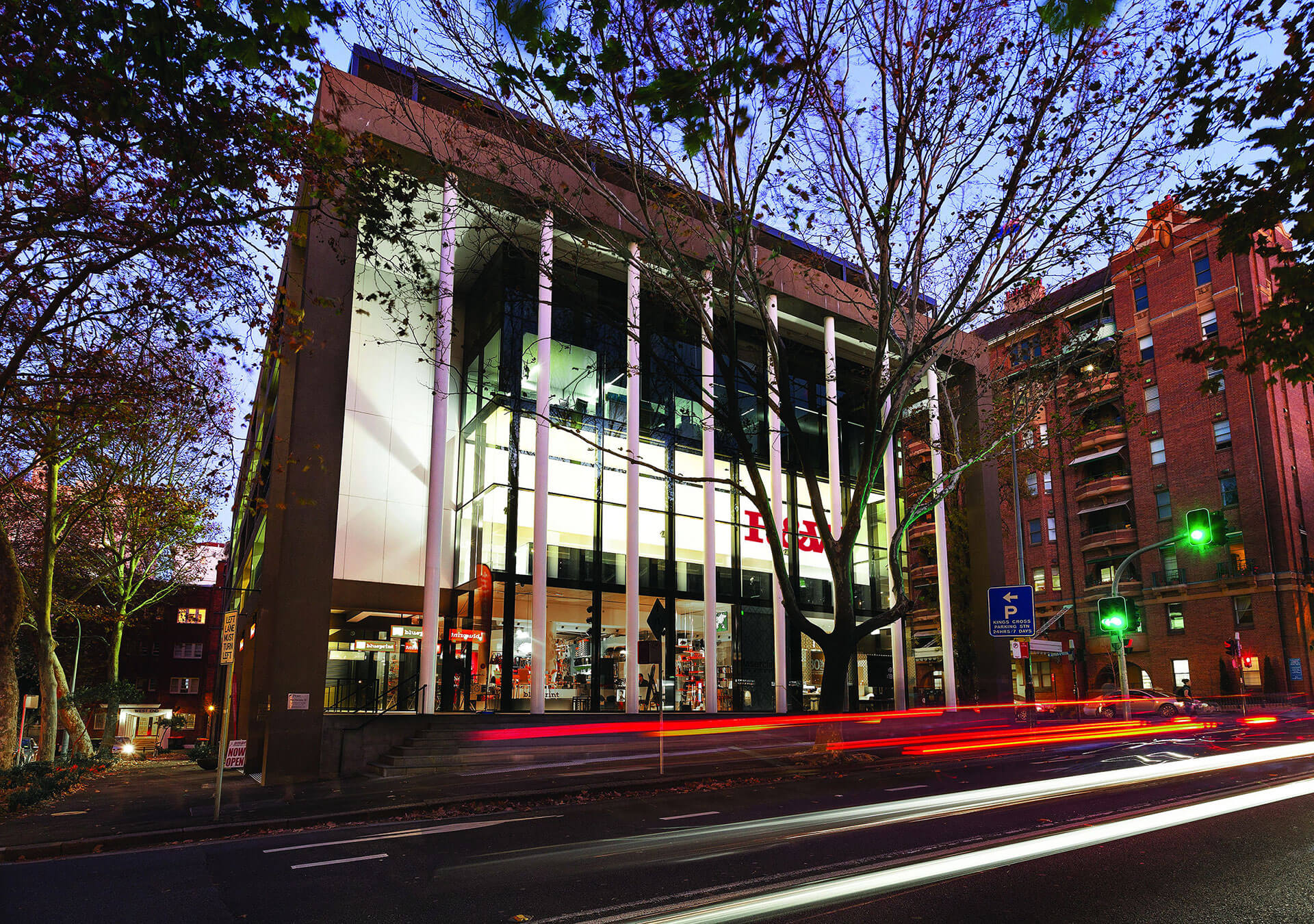Jolly Swagman Backpackers’ Hostel

“Waltzing Matilda” is Australia‘s best-known bush ballad, and has been described as the country’s “unofficial national anthem”.
The title was Australian slang for travelling on foot (waltzing) with one’s belongings in a “matilda” (swag) slung over one’s back. The song narrates the story of an itinerant worker, or “swagman“, making a drink of billy tea at a bush camp and capturing or stealing a stray jumbuck (sheep) to eat. When the jumbuck’s owner, a squatter (landowner), and three troopers (mounted policemen) pursue the swagman for theft, he declares “You’ll never catch me alive!” and drowns himself in a nearby billabong (watering hole), after which his ghost haunts the site.
The original lyrics were written in 1895 by Australian poet Banjo Paterson and were first published as sheet music in 1903. Extensive folklore surrounds the song and the process of its creation: it has its own museum, the Waltzing Matilda Centre in Winton, in the Queensland outback, where Paterson wrote the lyrics. In 2012, to remind Australians of the song’s significance, Winton organised the inaugural Waltzing Matilda Day to be held on 6 April, the anniversary of its first performance.
The song was first recorded in 1926. In 2008, a recording of “Waltzing Matilda” was added to the Sounds of Australia registry in the National Film and Sound Archive, which says that there are more recordings of “Waltzing Matilda” than any other Australian song.[
When backpacking industry caught on in the 1970s. British backpackers were attracted to something peculiarly Australian and what better for the name of a hostel then the “Jolly Swagman”?
The Jolly Swagman, 27 Orwell Street, Potts Point, has been established for over 40 years, since 1975.
This four-storey building is an example of modified Inter-War architecture with characteristics of the Georgian Revival and Mediterranean styles and dates to about 1929. Since the 1930s modifications have occurred, most notably the change of the primary façade from the south to the north in about 1985. This was a result of the construction of Springfield Gardens and pedestrianisation of Springfield Mall. The original primary elevation was to Springfield Avenue (now Springfield Mall).
It is known for its kaleidoscope of bright-coloured paintwork, often a feature of backpacker hostels generally.
The site was part of Springfield Lodge and grounds from 1870-73. The site also formed part of a lady’s college led by Madame Hinrichsen. A notice dated Saturday 19th July, 1873, in The Sydney Morning Herald states: “Madame and Fraulein Hinrichsen’s College for Young Ladies, Springfield, Macleay Street. Duties will be RESUMED on 22nd July.” From 1873 it was ‘Lady Murray’s School’ (also known as ‘Springfield Ladies College’) whose Principal was Lady Agnes Murray, wife of Sir Terence Aubrey Murray, Kt, (1810-73) who was both the Speaker of the New South Wales Parliament’s Legislative Assembly and the President of the New South Wales Legislative Council. A photo of Lady Murray and her nine pupils dated 19th November 1874 and held in the National Library, Canberra, shows each pupil in a high-necked, full-length, stiff white crinoline dress with carefully coiffured hair in a bun and clutching a Chapeau à la Paméla, a small hat with silk tail ribbon. Lady Murray’s School offered various subjects. Highlights included deportment, needlework and dancing.
It continued operation until 1877 prior to acquisition by its former French teacher, Rene Monsigny, in 1878 – 1879. The Ladies College remained open until 1887.
After 1888 Springfield Lodge and grounds no longer operated as a ladies’ college and passed through various ownerships. Some subdivision was undertaken to Potts Point/Kings Cross and including the establishment of Llankelly Lane to the east of the subject site in 1923/4. Springfield grounds was then subdivided and Springfield Avenue officially gazetted, linking the site to Darlinghurst Road in 1930. An early development on the site was ‘Woongarra Flats’ in 1931, managed by Richard Stanley Lambton. In 1937 it became ‘Woongarra Private Hotel’ and by 1939 Springfield Lodge itself was demolished. Llankelly Lane was widened and renamed “Llankelly Place”. The hotel was then renamed “Brooklyn Private Hotel”. Between 1940-1960 alterations were undertaken to incorporate a restaurant. In 1975 it was first opened as the “Jolly Swagman” backpackers, named after the classic song “Waltzing Matilda” as a response to Australia’s rise in international tourism in the youth market.
Unsurprisingly, the hostel uses a kangaroo on a surfboard with a swag on its back as its logo.
Backpacking is a peripatetic, semi-nomadic life using cheap and cheerful accommodation to see the world. Backpackers are usually between about 18-28 years old, free from mortgage stress and commitments and unlimited in their globe-trotting mentality with new friends adding up quickly. They contribute millions of dollars each year to our farmhand and fruit picking industries, see kangaroos and koalas in their native habitat and experience riding on a tractor.
To get a glimpse inside this laissez faire life click here: https://www.youtube.com/watch?v=CjwHU0f5Xko
by Andrew Woodhouse
Heritage Solutions





